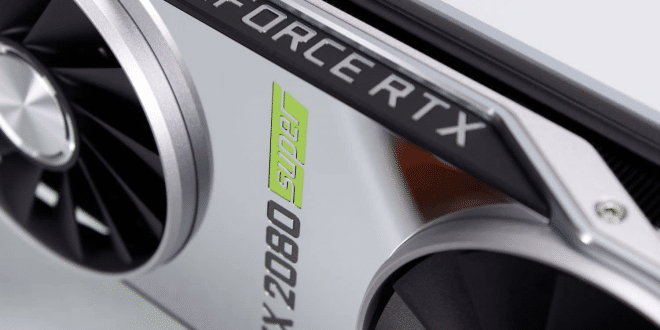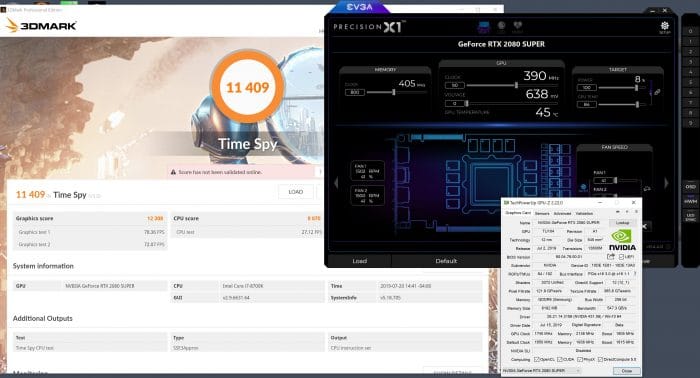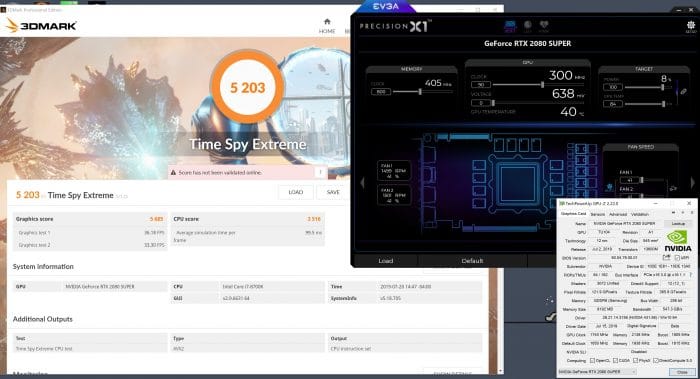Overclocking
Overclocking the GTX 2000 Series cards are very similar to 10 series but there have been some improvements in how the boost works in version 4 over version 3 which was on Pascal. We discussed this earlier in the features section.
While you would think the bump to 250W for he RTX 2080 SUPER, would not leave much room for pushing the clocks, it still had some room to move. The GPU we observed a default steady-state boost frequency of 1935MHz. We were able to push +90 to the core with the raised power limit to achieve a steady-state of 2010 – 2025MHz under constant gaming style loading.
The memory default for the RTX 2080 SUPER is the fastest VRAM to be used on a GPU to date with a clock rate of 15.5Gbps. We were able to push the memory to +800 which raised our effective clock to 17.1Gbps.
With the overclocks all set, we now ran some comparison runs of 3DMark Time Spy. As you can see, the graphics score for Time spy jumped by almost 6% compared to stock.
Moving to Time spy extreme we see the overclock deliver an almost 7 percent increase in graphics performance. Of course, I would like to see a lot more, but not too bad with no need for voltage adjustments or even raising the temperature limit.
 Bjorn3D.com Bjorn3d.com – Satisfying Your Daily Tech Cravings Since 1996
Bjorn3D.com Bjorn3d.com – Satisfying Your Daily Tech Cravings Since 1996











